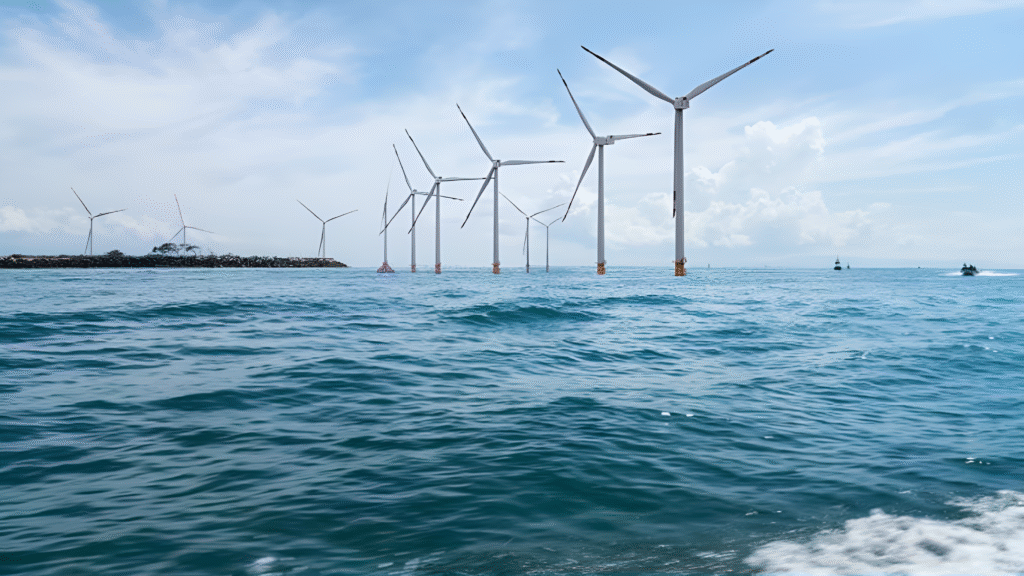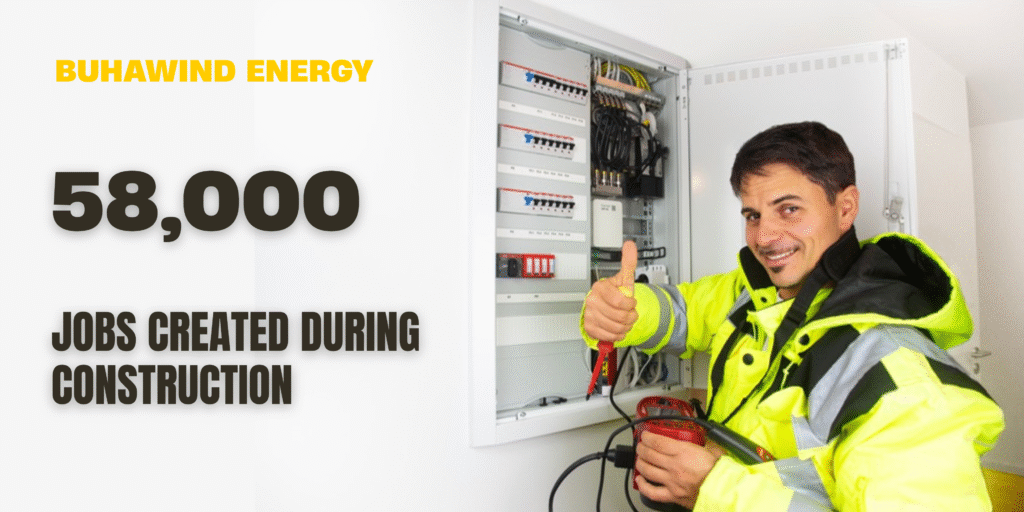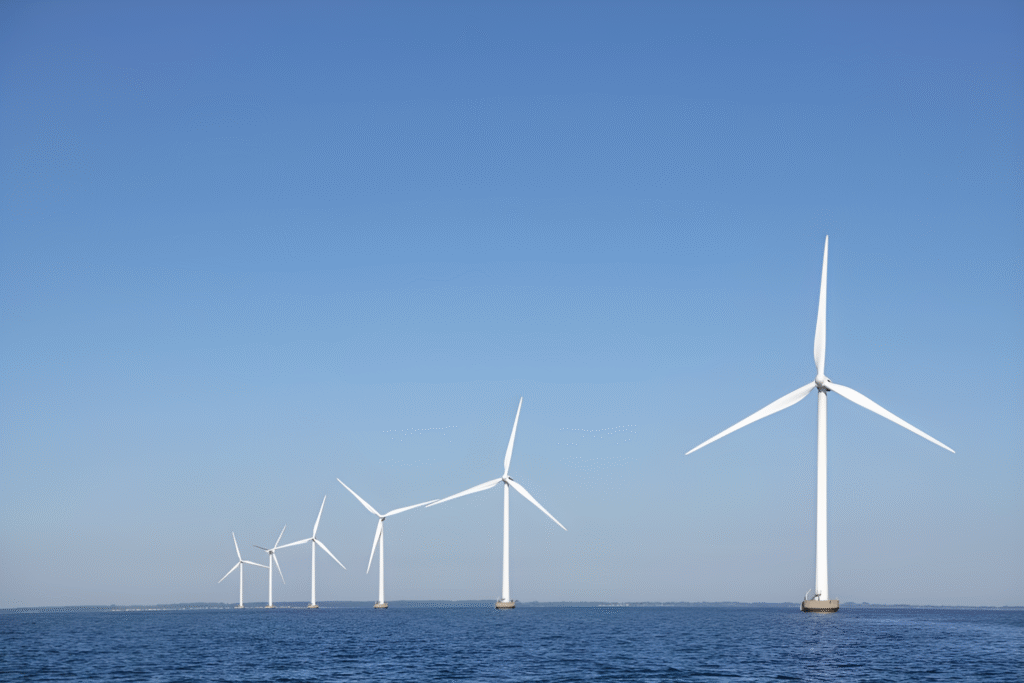With operations expected to begin in 2030, the Philippines has established itself as a pioneer in floating wind energy in Southeast Asia with the Northern Luzon Floating Offshore Wind Farm.
MANILA – The Philippines takes a pioneering step in its Floating Offshore Wind Journey. The country has received a pre-development environmental consent certificate (ECC) for a 2 gigawatt floating wind project in northern Luzon.
The floating wind project will be operated by Buhawind Energy Philippines. The project is considered one of the most ambitious offshore wind power industry efforts in Southeast Asia.
The floating wind project is set to become a model for Southeast Asia as it strengthens its clean energy ambitions in the coming decade.
Let’s take a look of project detailed, significance as well as the country’s strength, renewable energy goals, and policy with implement.
2 GW Floating Offshore Wind Project Glimpse
Project Name: Northern Luzon Floating Offshore Wind Project
Location: Off the coast of Ilocos Norte, Northern Luzon, Philippines
Capacity: 2GW – one of the largest offshore wind project in Southeast Asia
Developer: BuhaWind Energy Northern Luzon (BENL) — a partnership between
PetroGreen Energy Corporation (PGEC) – Philippines and Copenhagen Energy – Denmark
Environmental Compliance: Issued a Pre-Development ECC by the Philippine DENR
Survey Scope: ECC approval allows BENL to perform:
Geophysical surveys:
- Geotechnical assessments
- Assessments of marine biodiversity
- Environmental impact studies
- Social and community surveys
National Certification: Designated as of April 29, 2025, by the Department of Energy (DOE) as a Project of National Significance on Energy
Operational Timeline: Scheduled to be complete by 2030
Energy Impact: Seeks to provide power to millions of homes, lower country’s reliance on fossil fuels, and help achieve the Philippines’ target of 50% renewable energy by 2040
Other Projects on BuhaWind: 1GW East Panay Project (out of Iloilo & Guimaras Island) 1 GW Northern Mindoro Project (off Occidental Mindoro & Batangas)
BuhaWind Energy Philippines Leads Offshore Wind Revolution
BuhaWind Energy Northern Luzon Corporation (BENLC) is a strategic joint venture between PetroGreen Energy Corporation (PGEC) and Copenhagen Energy of Denmark, through which the country is working to reduce its dependence on fossil fuels while harnessing the vast potential of offshore wind.
PGEC has an extensive track record in developing and operating renewable generation facilities (onshore wind, solar, geothermal) throughout the country, and the nutshell of another partner,
Copenhagen, Denmark, a pioneer in renewable energy, especially offshore, has invested in many countries, including the Philippines, Bangladesh, Taiwan, Australia, New Zealand, Colombia. In the Philippines alone, CIP has a 1 GW project, where they are working to accelerate development ahead of the upcoming power auction. Through the companies’ deep expertise and partnerships in infrastructure development, the country is working to harness the vast potential of offshore wind to reduce its dependence on fossil fuels.

And based on this expertise, the Department of Environment and Natural Resources (DENR) has granted BuhaWind Energy a pre-development ECC. Companies will be able to conduct the preliminary research required for feasibility assessments based on four categories: geophysical, geotechnical, marine, environmental and social surveys.
“The ECC approval will allow the team to conduct a systematic, comprehensive, and scientific study of the project site,” said Errell Ventura, assistant vice president of the PGEC’s Environmental and Community Relations Division. “This ensures that the project not only meets international industry standards but also provides a factual basis for addressing any environmental or community-related concerns.”
These studies are critical to ensuring that the design of the So that, the project is consistent with environmental sustainability principles, seamlessly integrated into the local ecosystem and socio-economic landscape.
The Northern Luzon Wind Farm Significance
- DOE Recognition:
The Northern Luzon Floating wind Project was declared by the Department of Energy (DOE) as an Energy Project of National Significance on 29 April 2025.
- Strategic Impact:
This certification highlights the importance of the project in providing long-term energy security, economic development, technological innovation and positive environmental impact to the country.
- Supporting Renewables Energy Targets:
It supports the objective of the Philippine government to raise the share of renewable energy in its energy mix to at least 50% by 2040.
- High-Capacity Clean Power:
The project, with a total capacity of 2 GW, will provide for millions of Filipino homes and help the country achieve electrification rate by providing clean energy.
- Carbon Emission Reduction:
The floating wind farm is set to help reduce carbon emissions and move the country off fossil fuels.
- Renewable Energy Jobs Creation:
58,000, estimated job creation during the construction period.

Floating Wind Farms: A Vision for Energy Security in the Philippines
The approval of a 2GW floating wind project in northern Luzon strengthens the Philippines’ position in renewable energy in Southeast Asia. Floating wind farms are technically complex and capital-intensive.
With international partners like Copenhagen Energy, these projects are not only building local capacity but also attracting foreign investment, accelerating technology transfer, and establishing this country as a hub for offshore wind innovation.

While neighboring Southeast Asian countries are rapidly expanding their wind power industries, the country with the fifth-longest coastline in the world is unfortunately still heavily dependent on fossil fuels in its energy mix. Coal is the mainstay of electricity generation, while renewable sources such as geothermal and hydroelectricity are also notable.
Therefore, it is great to see that the country has set ambitious targets for renewable energy, with the government providing incentives for projects in this regard. They are now ready to harness the vast offshore resources to meet growing energy needs, reduce dependence on imported energy, and take strong steps towards their climate goals under the Paris Agreement.
The Philippines plans to achieve 35% of its electricity mix from renewables by 2030 and 50% by 2040, including a target of installing 19-50 GW of offshore wind power by 2050. The Philippine government’s National Energy Strategy focuses on strong growth in renewable power generation, with the goal of providing electricity to over 1 million unconnected households.
In this series, Buhawind is developing three floating offshore wind farms – Northern Luzon, Northern Mindoro and East Panay, which will generate a total of 4 gigawatts (GW) of electricity once operational – Northern Luzon (2 GW), Northern Mindoro (1 GW) and East Panay (1 GW) with water depths of 80-800 meters, which create very good conditions for the implementation of floating foundation technology.
It is also a positive sign that, with international partners like Copenhagen Energy, these projects are not only building local capacity, but also attracting foreign investment, accelerating technology transfer, and establishing the Philippines as a hub for offshore wind innovation.
Last Words
The project is expected to create thousands of local jobs including engineering, construction, marine operations and environmental management.
The issuance of the pre-development ECC to BuhaWind Energy Philippines for its 2 GW Floating Wind Project in Northern Luzon is a game changer in the country’s energy sector. In a race for the future, while the rest of the world is looking to clean energy, the Philippines has put itself on the starting blocks to lead the pack on the race to the development of floating offshore wind.
Already with three large projects in the country and supportive regulations in place, the Philippines is proving that floating wind is not a in-the-future-technology, but rather a real-world solution that can power the country’s energy future.
Watch and join on as BuhaWind Energy blazes a trail towards a Filipino energy future that is renewable, resilient and sustainable for the next generation.

as I website possessor I believe the articles here is very wonderful, thankyou for your efforts.